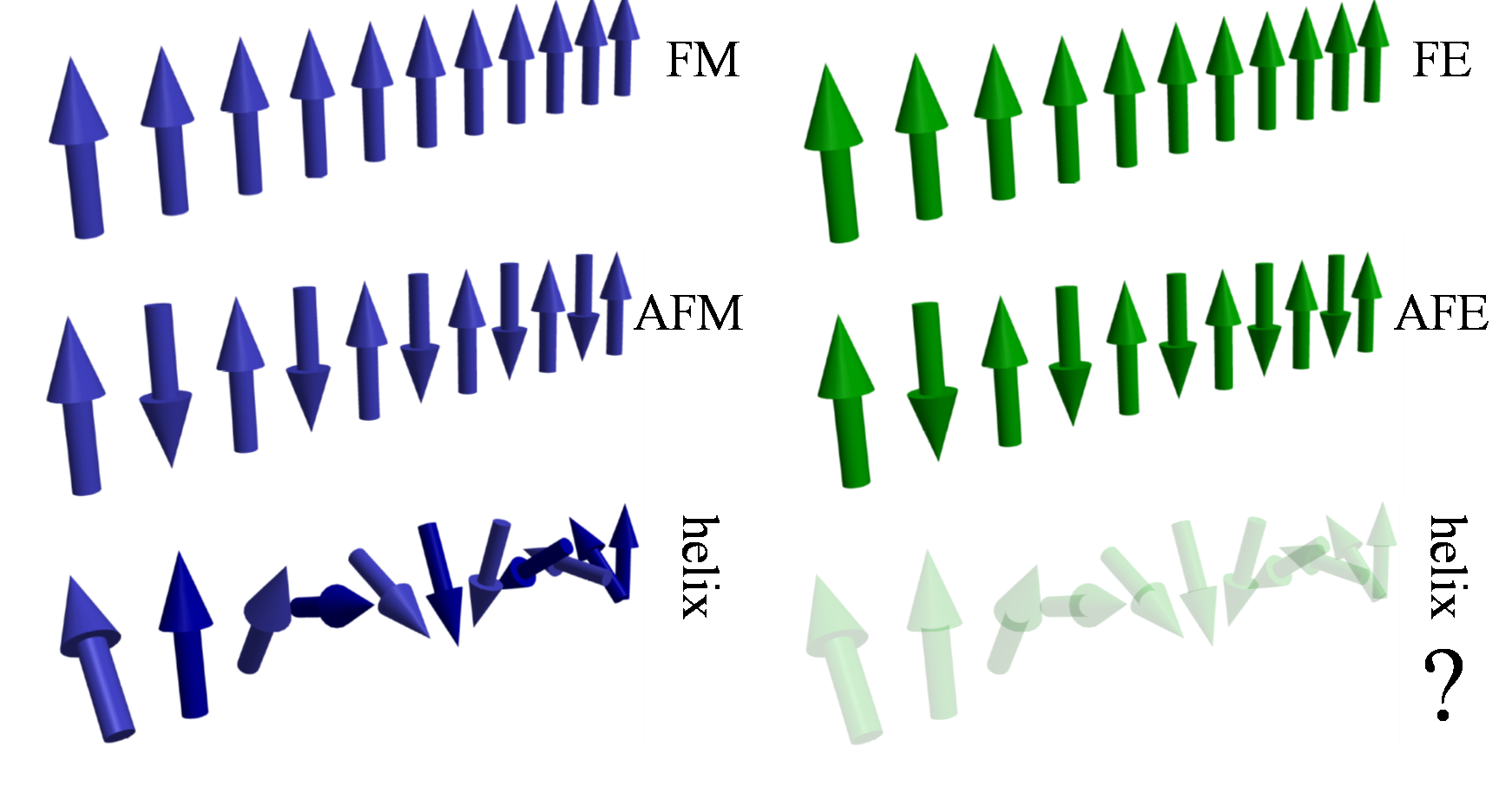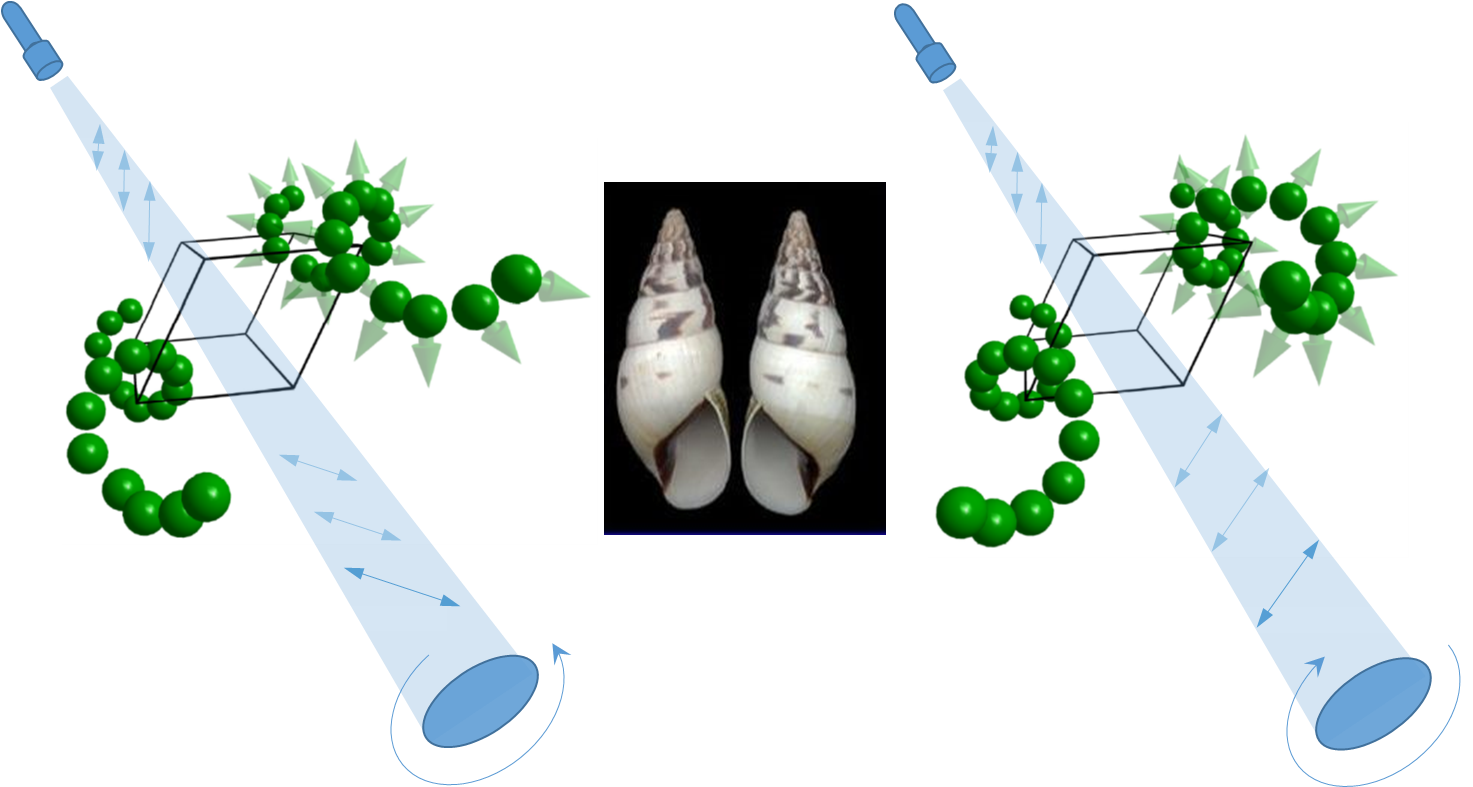The separation of positive and negative electric charges, as occurs in a charged battery, can be described in terms of an electric dipole moment that points from positive to negative. Similarly, magnetic dipole moments can be defined as pointing from north to south poles. Both electric and magnetic dipoles can occur in crystalline materials. For electric dipoles, this happens when atoms with opposite charges are displaced from their position in the crystal lattice, as in the top right diagram, below. Magnetic dipoles arise from the circulating currents of unpaired electrons within the atoms, as shown by the left-hand side.

Formation of local magnetic and electric dipole moments in a crystal
These microscopic dipoles typically interact with one another inside the crystal and adopt a common order. When the dipoles align so that they are pointing in the same direction, the behaviour is described as ferromagnetism (FM), for magnetic dipoles, and ferroelectricity (FE), for electric dipoles. For materials where all the magnetic / electric moments point in opposite directions, they can be described as antiferromagnetic (AFM), or antiferroelectric (AFE), respectively, as shown below.

The different orderings of magnetic and electric dipoles
Despite fundamentally different physical origins, there appears to be a remarkable analogy between the spontaneous ordering of electric and magnetic dipoles. However, many more complex types of non-collinear ordering are known for magnetic dipoles than for electric dipoles. These include helical or cycloidal orders that lead to complex phenomena such as multiferroicity and magnetic skyrmions that, to date, do not have electric dipole counterparts.
Unlike the collinear patterns, helical order is characterized by handedness (or chirality). This is a well-known property of many life-forms including the structure of DNA, anatomy and appearance as in the case of seashells shown in the picture below. Helices can be either right-handed or left-handed and one cannot be turned to look like another unless it is viewed in a mirror.

Left-handed and right-handed chiral atomic displacements in BiCuxMn7-xO12 forming electric dipole helices and associated rotation of polarization of a linearly polarized light. Shell photograph courtesy of Harry Lee.
In the present study, published in Science, nearly sixty years after the discovery of helical magnetism, the researchers describe the first example of helical ordering of electric dipoles in the crystalline material BiCuxMn7-xO12, thus completing the analogy between ordering of magnetic and electric dipoles in the solid state.
The discovery was made through a combination of cutting-edge experimental techniques. The BiCuxMn7‑xO12 samples were synthesised under high-pressure (6 GPa) and high-temperature (1100 oC) conditions at the National Institute for Materials Science (NIMS) in Tsukuba, Japan. The helical ordering of electric dipoles was established by combining synchrotron X-ray diffraction at Spring-8, Japan with time-of-flight neutron diffraction using the WISH instrument at ISIS. The measurements were followed by use of sophisticated data analysis methods involving four-dimensional crystallography.
The authors demonstrate that the helical ordering of electric dipoles occurs due to the microscopic competition between two instabilities that are present in the crystal structure of BiCuxMn7-xO12. One of them favours a conventional ferroelectric state, while another is associated with other structural distortions that are unrelated to the local charge separation. The helical ordering of electric dipoles emerges as a delicate balance these instabilities, which is finely tuned by modifying the concentration of Cu substituted for Mn.
Therefore, the study indicates that well-established principles of magnetism can now be adopted to explain emergent phenomena in dielectric materials. In particular, the authors predict that, according to symmetry based arguments and the application of principles previously established for magnetism, the chirality of the electric dipole helix could be switched by the application of an electric field. If demonstrated, this functionality would have profound implications for technological applications based on material properties that originate in structural chirality. For example, once might envisage electric control of optical activity (the rotation of the polarisation of linearly polarised light) and circular dichroism (differential absorption of left- and right-handed polarised light) in functional optoelectronic components.
Further information:
The full paper can be found online at DOI: 10.1126/science.aay7356
